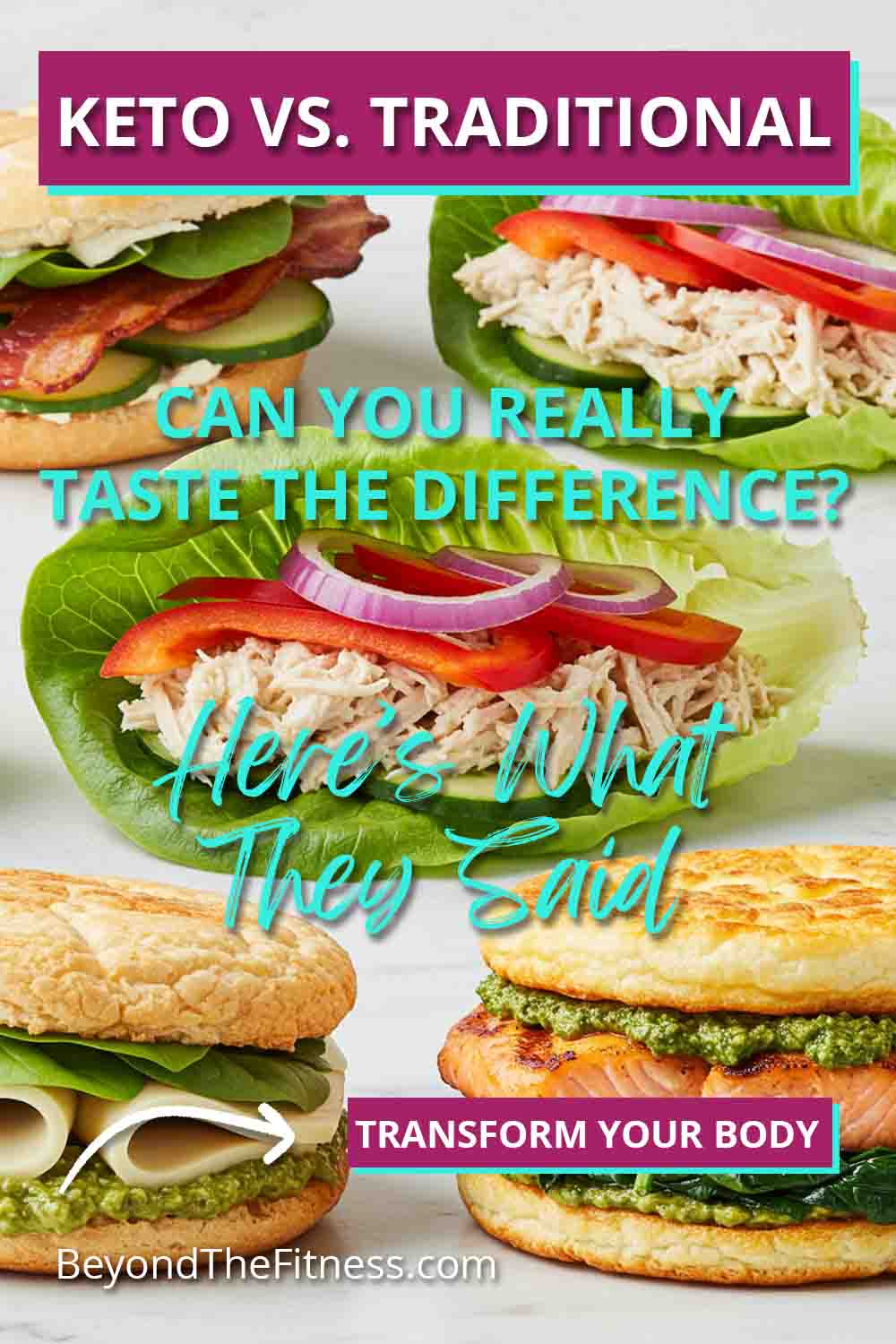Embarking on a new way of eating, like the ketogenic diet, brings up a lot of questions. One of the biggest ones I hear, especially from women considering it for weight loss or health goals, revolves around food enjoyment. Will meals taste bland? Will I miss my favorite carby treats? It’s a valid concern because, let’s be honest, if the food isn’t satisfying, sticking to any plan long-term becomes a real challenge. So, let’s dive into the taste comparison: keto versus more traditional ways of eating. Can you truly taste the difference, and if so, is it a deal-breaker?
Understanding the Keto Diet Basics
Before we talk taste, let’s quickly recap what the keto diet involves. It’s a very low-carbohydrate, moderate-protein, and high-fat eating plan. The goal is to shift your body’s primary fuel source from glucose (derived from carbs) to ketones (produced from fat breakdown). This metabolic state is called ketosis.
You Might Be Interested In: Delicious Keto Meals Tailored to Your Needs With Custom Keto Diet
To achieve this, you dramatically reduce your intake of foods like:
- Sugary foods and drinks
- Grains (bread, pasta, rice, cereal)
- Starchy vegetables (potatoes, corn)
- Most fruits
- Legumes (beans, lentils)
Instead, the focus shifts to:
- Meats and poultry
- Fish and seafood
- Eggs
- Healthy fats (avocado, olive oil, coconut oil, butter)
- Low-carb vegetables (leafy greens, broccoli, cauliflower, zucchini)
- Nuts and seeds (in moderation)
- Full-fat dairy (cheese, cream)
This fundamental shift in macronutrients naturally leads to different ingredient choices and cooking methods compared to more conventional diets.
What Do We Mean by “Traditional” Eating?
When I say “traditional,” I’m generally referring to diets that include a wider range of carbohydrates. This could be the Standard American Diet (SAD), often high in processed carbs and sugars, or a more balanced, health-conscious approach like the Mediterranean diet or simply a standard balanced plate recommended by many dietary guidelines. These diets typically feature grains, fruits, and starchy vegetables as regular components. The fat content is often lower, and protein intake can vary. The key difference relevant to taste is the prominent role carbohydrates play in meals and snacks.
How Our Taste Buds Perceive Food
Taste is complex. It’s not just about the five basic tastes (sweet, sour, salty, bitter, umami) detected by our taste buds. Aroma plays a huge role – think about how food tastes bland when you have a cold. Texture is also critical; the creaminess of mashed potatoes or the crunch of a chip adds significantly to the experience.
Fat, sugar, and salt are powerful drivers of palatability. Our bodies are often wired to enjoy these tastes. Traditional diets often rely heavily on sugar and refined carbohydrates for sweetness and texture, while keto relies more on fat for flavor and satiety. This difference in the primary “flavor carriers” is where potential taste distinctions arise.
Common Keto Swaps: A Taste Test
The biggest taste differences often emerge when keto dieters try to replicate high-carb favorites using low-carb ingredients.
Introducing: Benefits of Custom Meal Plans With Keto Diet
- Sweeteners vs. Sugar: This is a big one. Keto avoids sugar, honey, maple syrup, and other traditional sweeteners. Instead, low-carb or zero-calorie sweeteners like stevia, erythritol, monk fruit, or xylitol are used.
- Taste Difference: Yes, often noticeable. Some people detect a cooling sensation from erythritol or a slightly bitter aftertaste from stevia, especially if used in large amounts. Monk fruit is generally considered closer to sugar but can be expensive. The level of sweetness can also differ, requiring adjustments in recipes. They also behave differently in cooking and baking; they don’t caramelize like sugar, which affects texture and flavor in things like cookies or candies.
- Alternative Flours vs. Wheat Flour: Traditional baking relies on wheat flour. Keto baking uses nut flours (almond, coconut), seed flours, or sometimes psyllium husk.
- Taste Difference: Definitely. Almond flour has a mild, nutty taste and creates denser, moister baked goods. Coconut flour is very absorbent, has a distinct coconut flavor (which may or may not be desired), and can result in a drier texture if not balanced with enough liquid and fat. Neither achieves the same light, airy structure as gluten-containing wheat flour. Keto bread or pizza crust will have a different texture and taste profile than its traditional counterpart. It’s not necessarily bad, just different.
- Vegetable Stand-Ins vs. Carbs: Cauliflower rice for white rice, cauliflower mash for mashed potatoes, zucchini noodles (zoodles) for pasta, spaghetti squash for spaghetti.
- Taste Difference: Yes. While these swaps can be surprisingly good, they don’t perfectly mimic the originals. Cauliflower has its own mild flavor and a softer texture than rice or potatoes unless prepared carefully. Zucchini noodles are watery and much softer than al dente pasta. The key is seasoning and preparation. Well-seasoned cauli-rice in a stir-fry can be great, but plain, it tastes like cauliflower. Zoodles need robust sauces to stand up to their texture. They serve as vehicles for flavor rather than exact replicas.
- Limited Fruit: Keto significantly restricts high-sugar fruits like bananas, grapes, mangoes, and even apples and oranges in large quantities. Berries are usually allowed in small amounts.
- Taste Difference: This impacts snacks and desserts most. You won’t be having large fruit salads or traditional fruit pies. The sweetness in keto desserts often comes from sweeteners and the richness from fats, rather than the natural sugars in fruit.
- Emphasis on Fat: Keto meals often incorporate more butter, cream, cheese, oils, and fatty cuts of meat.
- Taste Difference: This often makes keto food taste richer and more savory. Fat carries flavor well. A steak cooked in butter with creamy spinach might taste more decadent than a lean chicken breast with steamed broccoli prepared according to lower-fat traditional guidelines. For many, this increased richness is a major positive aspect of keto taste.
Why Your Perception of Taste Might Change on Keto
It’s not just the ingredients; your own body and mind play a role in how keto food tastes to you.
- Taste Bud Adaptation: This is fascinating. When you drastically reduce your sugar intake, your sensitivity to sweetness can change. After a few weeks off sugar, even naturally sweet things like berries or bell peppers can taste much sweeter than you remember. Similarly, you might become more attuned to the flavors in vegetables or savory dishes once they aren’t masked by high levels of sugar or refined carbs. Your palate can genuinely adapt.
- Ingredient Quality: This applies to any diet. Using fresh, high-quality ingredients will always yield better-tasting food. Grass-fed butter, fresh avocados, vibrant low-carb vegetables, and well-sourced meats will taste better than lower-quality alternatives, whether you’re eating keto or not.
- Cooking Skills Matter: A skilled cook can make delicious meals following almost any dietary pattern. Learning how to properly use keto ingredients – balancing fats, using seasonings effectively, mastering cooking techniques for alternative flours – makes a huge difference. A poorly executed keto recipe will taste bad, but so will a poorly executed traditional recipe.
- Individual Differences: We all perceive taste slightly differently due to genetics and personal preferences. Some people are “supertasters” and might be more sensitive to the bitterness in some vegetables or the aftertaste of certain sweeteners. What one person finds delicious, another might not enjoy.
- Mindset and Expectations: If you go into keto expecting the food to be bland, restrictive, and unpleasant, you might inadvertently bias your perception. Approaching it with curiosity and a willingness to explore new flavors and textures can lead to a more positive experience. Focusing on what you can eat, rather than what you can’t, helps immensely.
Keto Considerations Specifically for Women
Women’s bodies can sometimes respond differently to dietary changes than men’s.
- Hormonal Influence: Significant dietary shifts, especially drastic carb restriction, can sometimes influence hormonal balance and the menstrual cycle in sensitive individuals. Cravings can also fluctuate throughout the cycle, potentially making adherence challenging at times. Listening to your body is key.
- Nutrient Needs: Ensuring adequate intake of micronutrients like calcium, iron, folate, and magnesium is important for women on any diet, including keto. Focusing on nutrient-dense keto foods like leafy greens, avocados, nuts, seeds, and quality proteins helps.
- Social Eating: Let’s face it, food is social. Navigating parties, family dinners, or eating out can feel trickier on keto initially. Planning ahead, bringing a keto-friendly dish to share, or learning how to order keto at restaurants can ease this. The perceived “difference” in food might feel more pronounced in social settings where traditional carb-heavy options are the norm.
Weight Loss, Sticking Power, and Taste
For many women I work with, weight loss is a primary motivator for trying keto. The diet can be very effective for this due to appetite suppression from fat and protein, reduced insulin levels, and the metabolic shift. However, long-term success hinges on sustainability.
Can you stick with a diet if you dread meal times? Probably not. Finding keto foods and recipes that you genuinely find tasty and satisfying is crucial. If every meal feels like a sacrifice, willpower will eventually run out. The good news is that the keto landscape has exploded. There are countless delicious recipes available, from simple whole-food meals to surprisingly good recreations of old favorites. The “difference” in taste doesn’t have to mean “worse.”
Making Keto Taste Amazing: My Tips
If you’re finding keto food bland or just “different” in a way you don’t love, try these strategies:
- Embrace Herbs and Spices: Don’t be shy with seasonings. Garlic powder, onion powder, paprika, cumin, oregano, basil, chili powder, salt, pepper – these are your best friends for adding flavor without carbs. Fresh herbs like parsley, cilantro, and rosemary also add brightness.
- Focus on Whole Foods: While keto products exist, build your diet around naturally low-carb whole foods: quality meats, fish, eggs, non-starchy vegetables, avocados, olives, nuts, and seeds. These taste great on their own.
- Don’t Fear Fat: Healthy fats add flavor and satiety. Cook vegetables in butter or olive oil, add avocado to salads, use cream in sauces, enjoy fatty fish like salmon.
- Experiment with Recipes: Don’t like the first keto bread recipe you tried? Find another one. There’s huge variation. Explore different keto websites, cookbooks, and blogs.
- Quality Keto Products: If using sweeteners or alternative flours, try different brands. Some taste much better than others. Read reviews.
- Sauces and Dressings: Learn to make simple keto-friendly sauces and dressings. A good vinaigrette, a creamy avocado dressing, or a simple pan sauce can elevate any meal.
- Roast Your Vegetables: Roasting vegetables like broccoli, Brussels sprouts, cauliflower, and zucchini brings out their natural sweetness and creates delicious caramelization. Toss them generously with oil and seasonings before roasting.
A Meal-by-Meal Taste Comparison
Let’s look at some typical meals:
- Breakfast:
- Keto: Scrambled eggs with cheese, bacon, and avocado slices.
- Traditional: Cereal with milk and a banana, or toast with jam.
- Taste Difference: The keto breakfast is savory, rich, and fatty. The traditional is often sweeter and lighter. Both can be delicious, but they offer very different taste experiences. Keto pancakes made with almond flour and sweetener will taste denser and different from fluffy buttermilk pancakes.
- Lunch:
- Keto: Large salad with grilled chicken, lots of non-starchy veggies, cheese, nuts, and a full-fat vinaigrette.
- Traditional: Turkey sandwich on whole wheat bread with lettuce, tomato, and mayo, perhaps with a side of chips.
- Taste Difference: The keto salad can be incredibly flavorful and satisfying due to the fats and protein. The sandwich relies on the bread for structure and familiar taste; the keto equivalent might be a lettuce wrap or keto bread, which will taste different.
- Dinner:
- Keto: Baked salmon with roasted asparagus tossed in olive oil and lemon.
- Traditional: Spaghetti with meat sauce and a side salad.
- Taste Difference: The salmon dish is naturally keto and tastes largely the same regardless of diet. The difference is stark with the pasta dish. Keto versions using zoodles or spaghetti squash won’t replicate the texture or neutral taste of wheat pasta. Keto pizza on a cauliflower or fathead (cheese/almond flour) crust tastes vastly different from traditional pizza dough.
- Dessert:
- Keto: Keto cheesecake made with cream cheese, sweetener, almond flour crust, topped with berries.
- Traditional: Regular cheesecake with a graham cracker crust and sugary topping.
- Taste Difference: Often noticeable, primarily due to the sweetener used and the crust texture. Keto versions can be very rich and creamy, but might lack the specific sweetness profile of sugar or the familiar crunch of a graham cracker crust.
The Verdict: Is There a Taste Difference?
Yes, in many cases, there is a discernible difference in taste and texture between keto foods and their traditional, higher-carb counterparts. This is especially true for baked goods, pasta/rice substitutes, and anything relying heavily on sugar for its flavor profile.
However, “different” does not automatically mean “bad.”
- Many naturally keto-friendly meals (steak and veggies, salmon and asparagus, chicken salad) taste virtually identical regardless of your overall diet.
- The increased use of healthy fats often makes keto meals taste richer and more savory, which many people prefer.
- Taste adaptation is real. Your palate can change, reducing cravings for intense sweetness and increasing appreciation for other flavors.
- Preparation and ingredient quality are huge factors. Well-made keto food can be incredibly delicious.
Ultimately, whether the taste difference is acceptable or even enjoyable comes down to individual preference, willingness to experiment, and how well you adapt your cooking. Many people find keto food deeply satisfying and don’t feel deprived. Others might miss certain textures or tastes more acutely. It’s less about keto inherently tasting worse and more about adjusting to a different way of highlighting flavors – using fat and savory elements more prominently than sugar and starch.
Related YouTube Video
Final Thoughts
Deciding if a way of eating works for you involves more than just potential weight loss or health benefits; enjoyment matters for sticking with it. When comparing keto to traditional eating, there are undeniable taste and texture differences, particularly when swapping high-carb staples like bread, pasta, rice, and sugar. Keto relies more on fat for richness and uses alternative sweeteners and flours. While some keto meals are naturally delicious and similar to traditional ones (think meat and low-carb vegetables), recreating carb-heavy favorites often results in a different experience. This difference isn’t necessarily negative; many find keto meals savory and satisfying, and taste buds can adapt over time. Success often lies in focusing on whole, unprocessed keto foods, mastering keto cooking techniques, using seasonings generously, and finding recipes you genuinely enjoy, rather than constantly trying to perfectly replicate traditional dishes. The key is finding a sustainable approach that nourishes your body and satisfies your palate.







